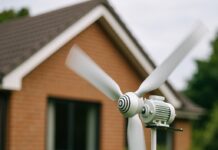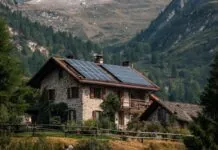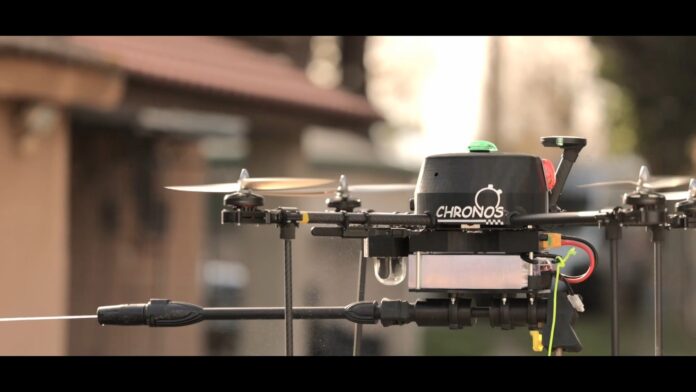
Solar panel cleaning has always been one of the most stubborn challenges in the push for renewable energy. Dust, pollen, bird droppings, and air pollution build up on the glass, blocking sunlight and quietly eating away the efficiency.
Studies have shown that even a thin film of grime can slash energy output by a noticeable margin, which means money lost for homeowners and bigger setbacks for large solar farms.
The issue is simple to see but hard to fix, because climbing rooftops or covering acres of panels with hoses and brushes is slow, costly, and risky for workers.
It seems a smarter way forward may already be in sight, and the answer could come from the skies.
French Drone Steps In to Tackle the Solar Cleaning Challenge
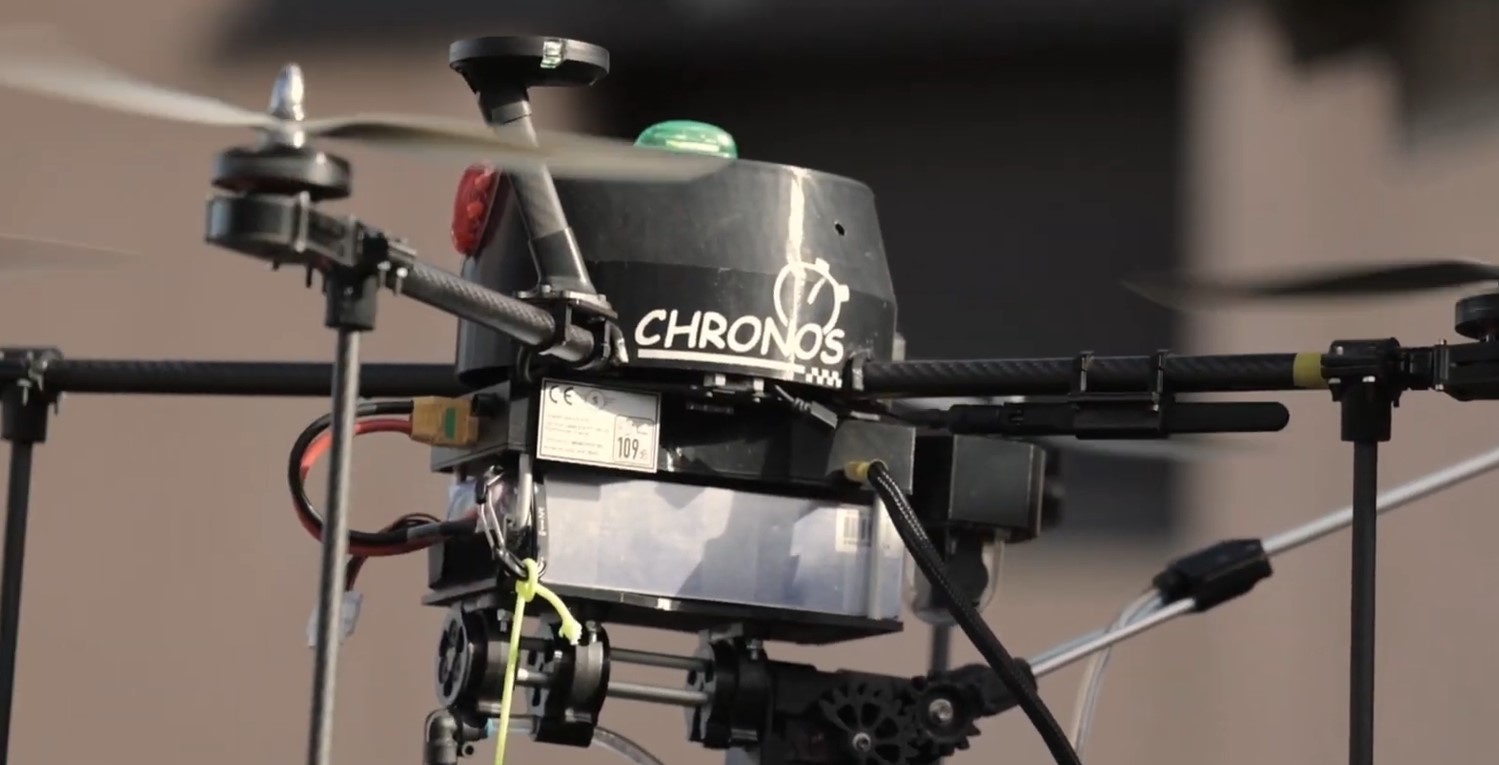
The struggle to keep solar panels clean has met a fresh contender in the form of the Chronos drone, developed by French manufacturer Objectif Drone.
Instead of crews climbing rooftops with hoses or crawling across fields of solar arrays with heavy gear, the Chronos hovers in and sprays away the dust and debris that cut into energy output.
It is a new approach designed for maintenance teams who face the constant challenge of keeping panels at peak performance in a world that relies on every watt of clean power.
Chronos combines the reach of a flying system with the control of ground-based equipment.
With a tether to a pump on the ground, operators can choose low-pressure spraying for delicate jobs or unleash a high-pressure kit for tougher buildup.
The drone does the work with precision, thanks to built-in LiDAR, high-definition cameras, and satellite positioning technology.
At just 5.3 pounds, it is light but equipped with enough power to clean up to 5,380 square feet in an hour, reaching panels as high as 164 feet above ground.
Full Specification of the Chronos multirotor UAS by Objectif Drone
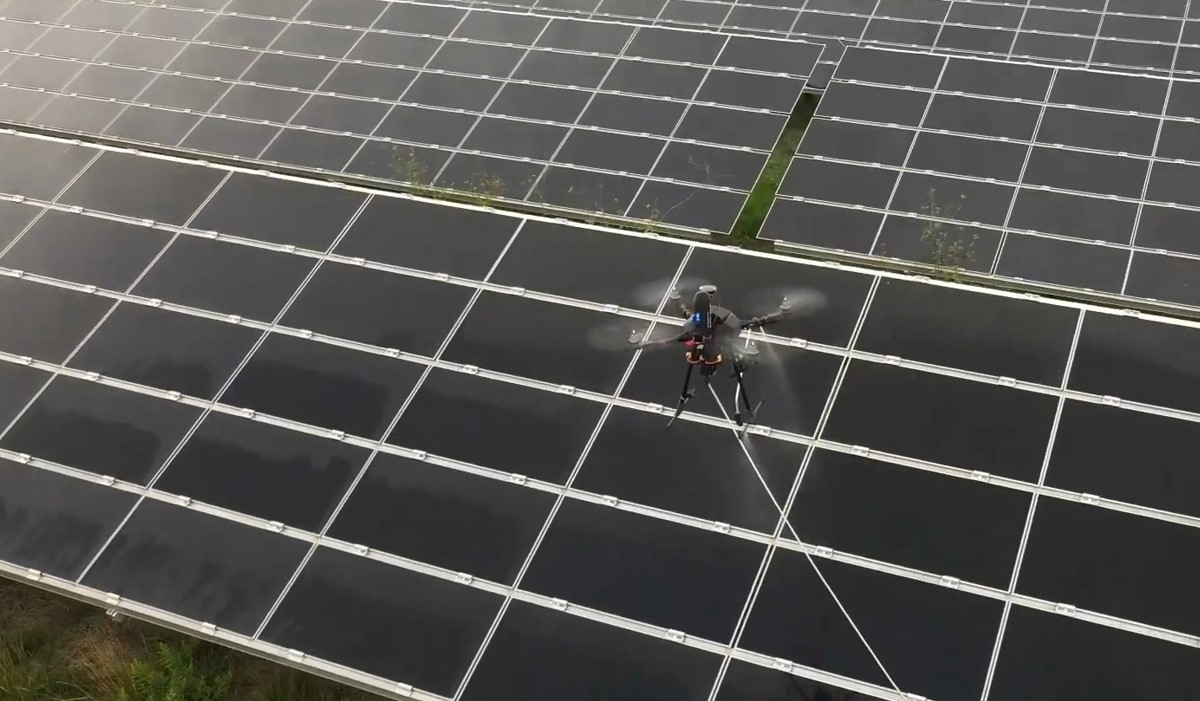
| Manufacturer | Objectif Drone, France |
| Model | Chronos multirotor UAS |
| Coverage Capacity | Up to 5,380 sq ft per hour |
| Height Reach | Up to 164 ft |
| Spray Options | Low-pressure spray with 164 ft hose, high-pressure kit at 1,595 psi with 82 ft hose |
| Nozzle System | Double-nozzle adjustable boom |
| Battery Duration | 40 minutes (low-pressure), 30 minutes (high-pressure) |
| Guidance Systems | LiDAR, HD cameras, RTK satellite positioning |
| Safety Compliance | EASA C5 captive-type system with signaling beacon and ID |
| Size | 24.4 in x 24.4 in x 16.5 in |
| Weight | 5.3 lbs |
| Enclosure Rating | IPX4 (splash resistant) |
| Warranty | 2 years with after-sales support |
For a solar industry that has long seen efficiency losses mount because of simple dirt, a drone that can scale rooftops and solar farms alike without risking human safety signals a turning point.
How Dirt Eats Away the Solar Efficiency
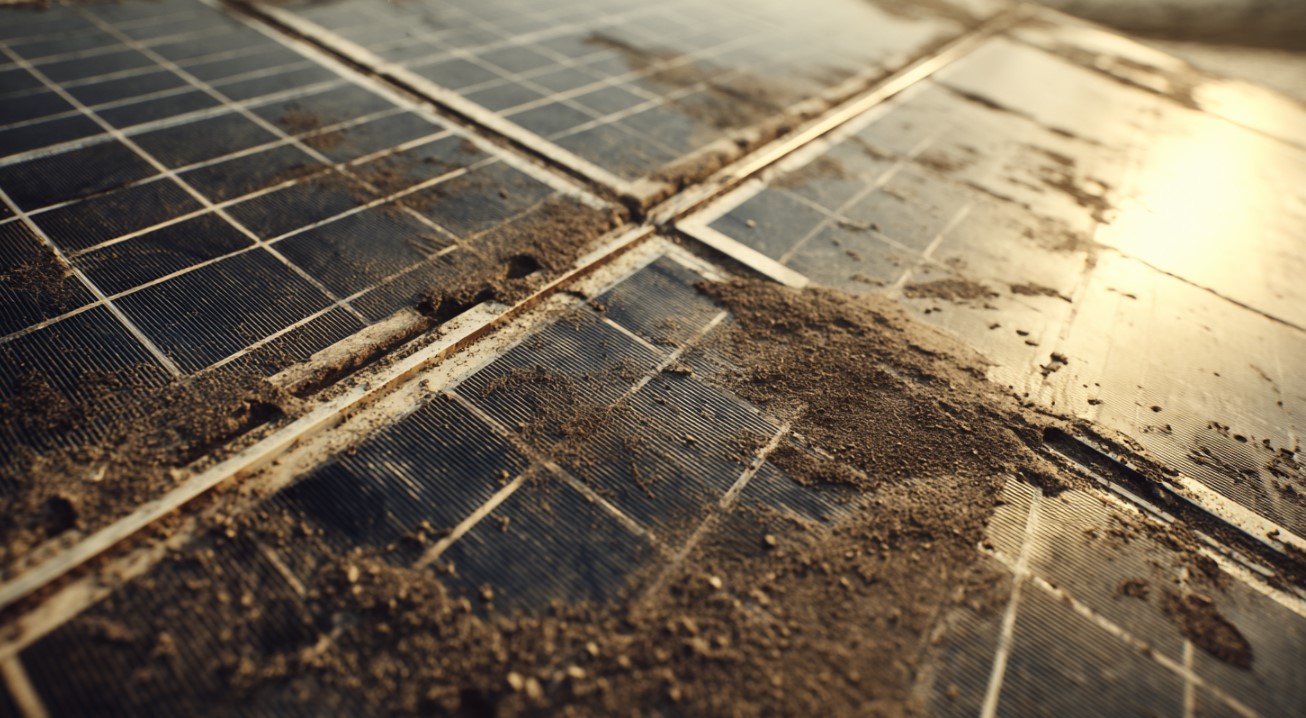
As we already mentioned, the buildup of dust and grime is the single most stubborn issue in keeping solar panels productive.
The effect is not small. Research by the National Renewable Energy Laboratory has shown that light soiling can reduce panel output by 7 percent, and in regions with desert dust or heavy pollution, losses of 20,30, or even 50 percent are common.
Even in suburban areas, bird droppings or sticky pollen can cut into production more severely than dust alone, forcing owners to clean more often than expected.
Those losses are not just percentages on a chart. A 10 percent drop on a typical 6-kilowatt home system means hundreds of kilowatt-hours lost each year, equal to dozens of dollars on the utility bill.
For a utility-scale project with hundreds of megawatts installed, the same drop translates into revenue losses that run into millions.
That explains why solar companies and maintenance teams treat cleaning as an unavoidable part of operations, despite the costs and headaches it brings.
Safety and Labor Challenges on the Ground
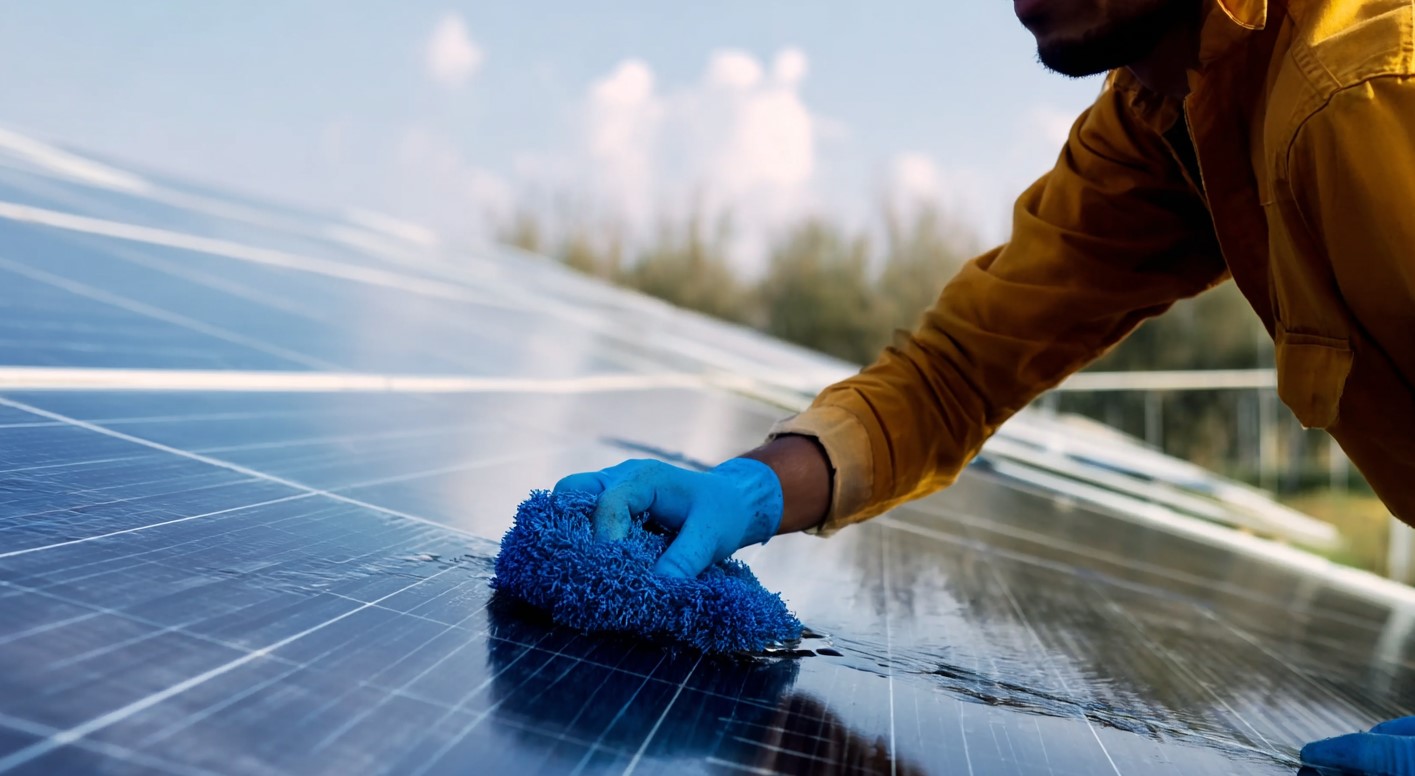
Cleaning brings its own risks. Rooftop crews face the constant hazard of falls, which remain one of the leading causes of injury in construction and maintenance work.
Large solar farms require long days under extreme heat, with workers hauling water lines and cleaning gear across acres of glass.
In California and Texas, crews often report that labor hours spent on cleaning rival or even exceed the time devoted to mechanical repairs.
Add in the sheer amount of water required for each cleaning cycle, and it is easy to see why the push for safer, more efficient methods has only grown stronger.
Are Drones the Answer to Solar Panel Cleaning?
Solar panel cleaning has become one of the most overlooked costs in renewable energy. Panels lose power fast when dirt builds up, yet the work of keeping them clean often means high labor, heavy water use, and real safety risks.
The Chronos drone from France shows how new tools can take on that burden in a smarter way.
By shifting the focus from manual crews to precise aerial systems, the industry may finally find a reliable answer to the problem that has held solar back for years.



